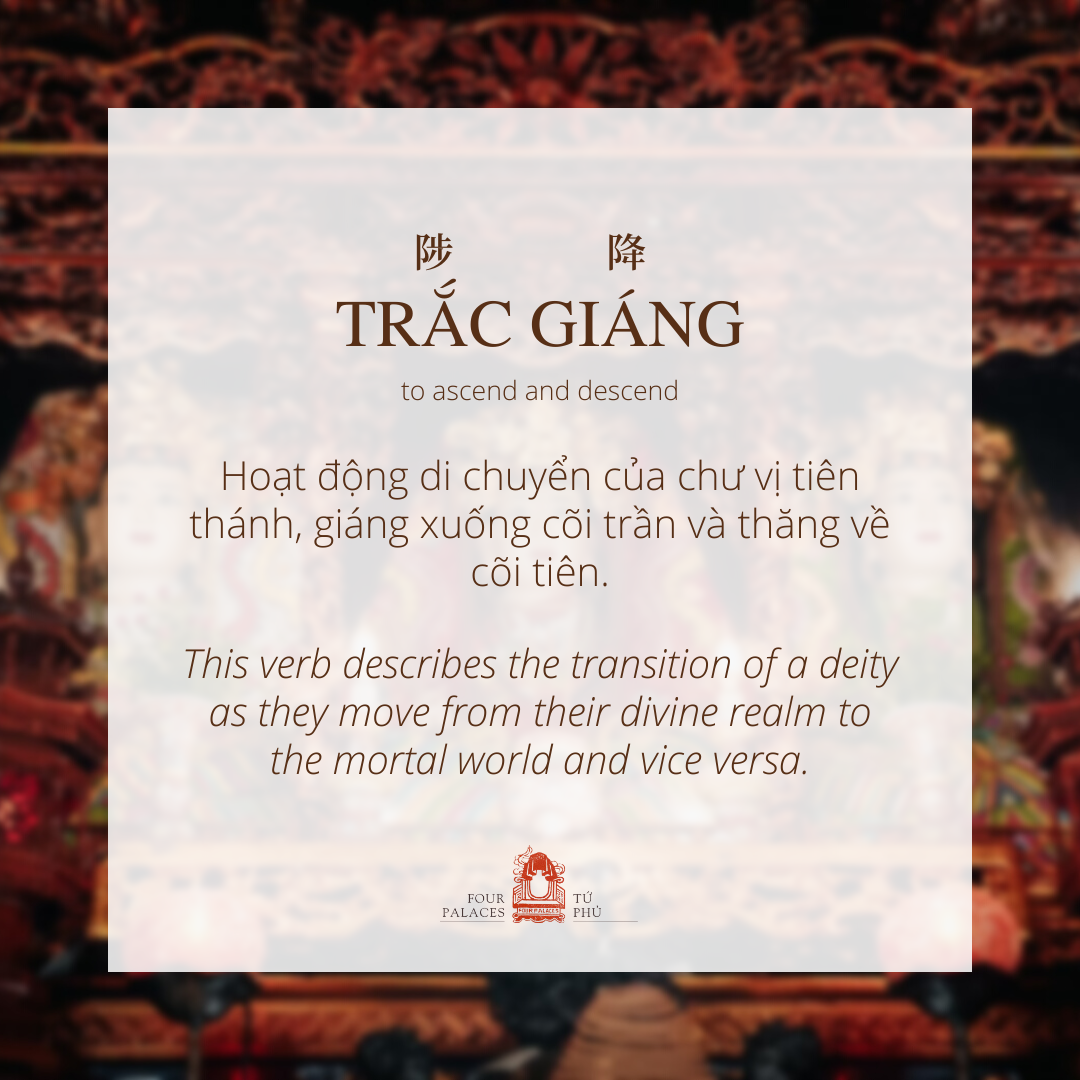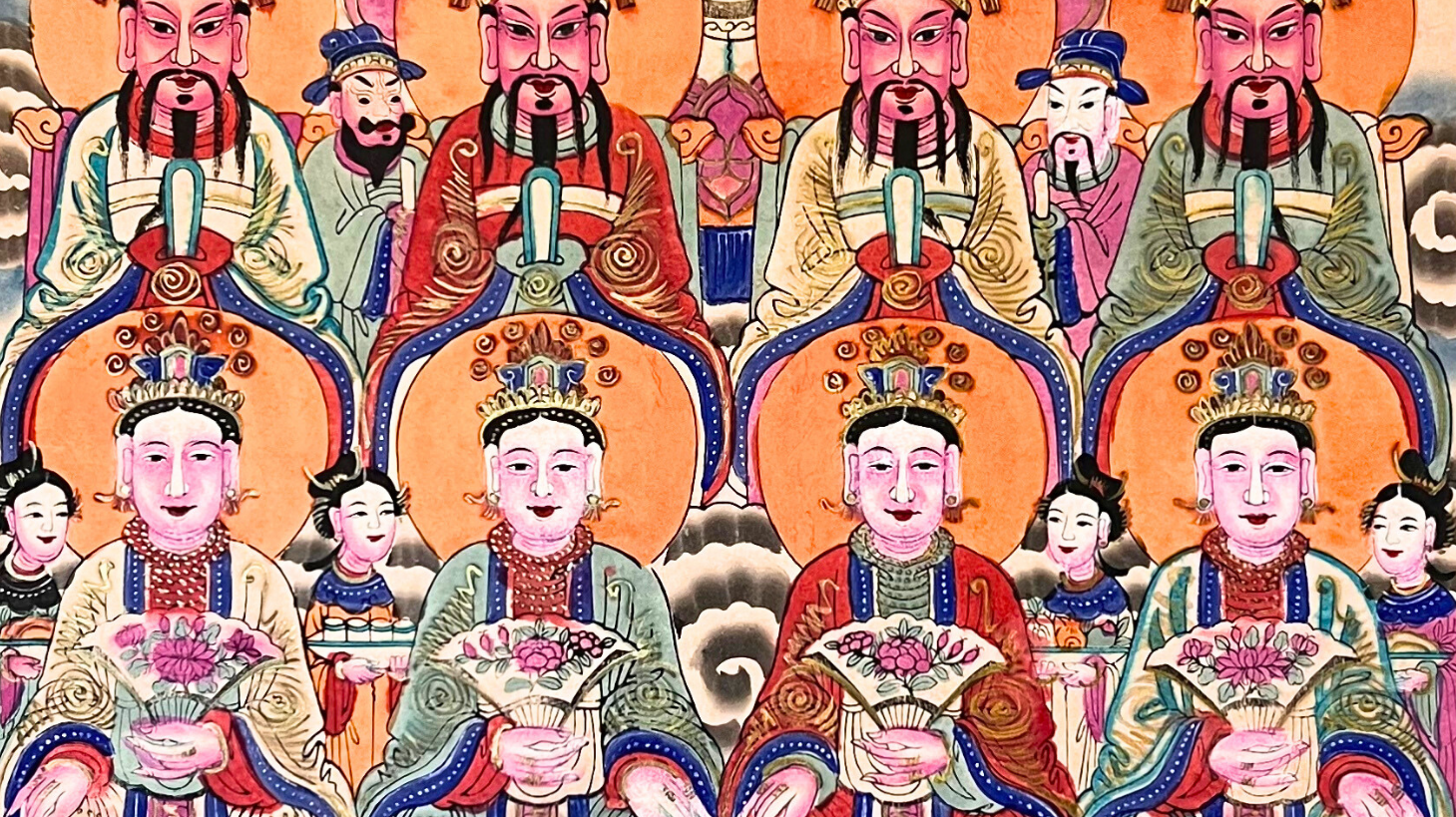
In the Vietnamese context, when describing the transition of a deity moving between their divine realm and the mortal world, a common term used is “trắc giáng.” But what exactly does “trắc giáng” mean?
This Sino-Vietnamese verb translates to “ascend and descend,” with its components defined as follows:
- Trắc [陟]: ascend, rise, or the act of going upward.
- Giáng [降]: descend, going downward, or the act of coming from a higher place.
This term is rooted in the Classic of Poetry [詩經], specifically in the series “Great Elegance [大雅],” where it is noted: “King Wen ascends and descends, by the right and left sides of the Emperor.”
Hence, when we invoke a deity to “trắc giáng” into and from a shrine, we are essentially inviting them to transition between their divine realm and the earthly shrine, encompassing both ascension and descent.








